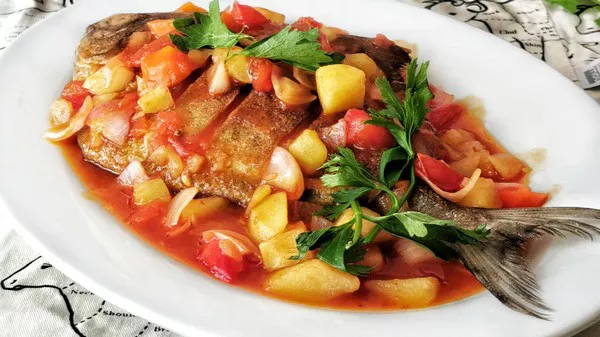Sweet and sour fish is a classic Chinese dish beloved for its harmonious blend of flavors and textures. Originating from Guangdong province, this iconic dish has become a staple in Chinese cuisine, enjoyed both domestically and internationally. While it may seem daunting to recreate the flavors of traditional Chinese cooking at home, with the right ingredients, techniques, and a dash of patience, anyone can master the art of cooking sweet and sour fish.
Understanding the Ingredients
Before diving into the cooking process, it’s essential to familiarize yourself with the key ingredients that define the flavor profile of sweet and sour fish.
1. Fish: The choice of fish is crucial for this dish. Opt for firm-fleshed varieties such as tilapia, cod, or snapper, as they hold up well to the cooking process and absorb the flavors of the sauce.
2. Sweet and Sour Sauce: A balanced sweet and sour sauce is the heart of this dish. Traditional Chinese sweet and sour sauce typically includes ingredients such as vinegar, sugar, ketchup, soy sauce, and sometimes pineapple juice for added sweetness.
3. Vegetables: Bell peppers, onions, and pineapple are commonly used in sweet and sour fish to provide contrasting colors, flavors, and textures. These vegetables not only enhance the visual appeal of the dish but also contribute to its overall taste.
4. Cornstarch: Cornstarch is used to coat the fish before frying, creating a crispy exterior that contrasts with the tender fish inside. It also helps thicken the sweet and sour sauce, giving it a glossy finish.
5. Garnishes: Garnishes such as chopped scallions, sesame seeds, or cilantro add a pop of freshness and color to the finished dish, elevating its presentation and flavor.
Preparing the Fish
1. Clean and Pat Dry: Begin by cleaning the fish thoroughly under cold running water to remove any scales or impurities. Pat the fish dry with paper towels to ensure it’s completely dry, as excess moisture can prevent the cornstarch coating from adhering properly.
2. Cutting: Cut the fish into bite-sized pieces, ensuring uniformity in size to ensure even cooking. Removing any bones is also essential to enhance the dining experience.
3. Marinating: Marinate the fish pieces with a mixture of soy sauce, rice wine, and a pinch of salt for at least 15-30 minutes. This step not only adds flavor but also helps tenderize the fish.
4. Coating with Cornstarch: Just before frying, coat the marinated fish pieces with cornstarch, shaking off any excess. This thin layer of cornstarch creates a crispy coating when fried, sealing in the moisture of the fish.
SEE ALSO: How to Cook Chinese Chopsuey
Creating the Sweet and Sour Sauce
1. Preparation: In a bowl, combine vinegar, sugar, ketchup, soy sauce, and a touch of water. Adjust the quantities according to your taste preferences, balancing the sweetness and sourness to achieve the desired flavor profile.
2. Thickening: To thicken the sauce, mix a slurry of cornstarch and water in a separate bowl. Gradually pour the slurry into the sauce while stirring continuously until it reaches the desired consistency. Be cautious not to add too much cornstarch, as it can make the sauce overly thick.
3. Cooking: Heat a wok or skillet over medium heat and add a small amount of oil. Once hot, add the chopped onions, bell peppers, and pineapple chunks, and stir-fry for a few minutes until slightly softened. Then, pour in the sweet and sour sauce, stirring constantly until it thickens and coats the back of a spoon.
Frying the Fish
Heat Oil: In a separate pan or wok, heat oil for frying. The oil should be hot but not smoking, around 350°F (180°C).
1. Frying: Carefully add the cornstarch-coated fish pieces to the hot oil, ensuring they are not overcrowded. Fry in batches if necessary to maintain an even temperature and prevent the fish from sticking together. Fry until the fish is golden brown and crispy on the outside, typically 3-4 minutes per side depending on the thickness of the fish.
2. Draining: Once fried, remove the fish pieces from the oil using a slotted spoon and place them on a plate lined with paper towels to drain off any excess oil.
Assembling the Dish
1. Combining: Transfer the fried fish pieces to the wok with the sweet and sour sauce, gently tossing to coat each piece evenly.
2. Finishing Touches: Garnish the dish with chopped scallions, sesame seeds, or cilantro for a burst of freshness and flavor.
3. Serving: Sweet and sour fish is best served hot, alongside steamed rice or noodles to soak up the delicious sauce. Garnish with additional fresh vegetables for a vibrant presentation.
Conclusion
Cooking sweet and sour fish Chinese style is a rewarding culinary experience that allows you to explore the vibrant flavors of Chinese cuisine in the comfort of your own kitchen. By understanding the key ingredients and mastering the techniques involved, you can create a delicious and authentic dish that will delight your family and friends. So, gather your ingredients, roll up your sleeves, and embark on a culinary journey to savor the tantalizing flavors of sweet and sour fish.
Related Topics:


























